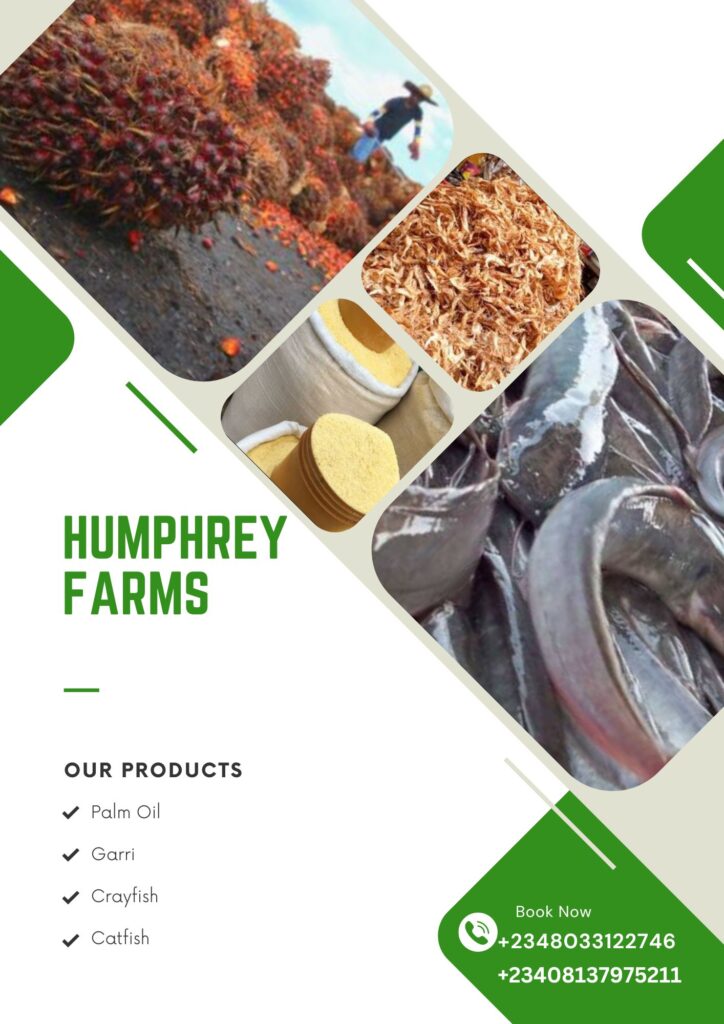
Garri, a staple food made from cassava tubers, is cherished for its unique sour flavor and versatility. This guide provides a thorough breakdown of the garri production process, ensuring you understand every step involved.
Introduction to Garri
Garri is a popular African food made from cassava, known for its delicious and tangy flavor. There are two main varieties: white garri and yellow garri.
Yellow garri is distinguished by the addition of palm oil during the frying process, which gives it a vibrant color and a richer taste.
Garri can be enjoyed in several ways—mixed with sugar or honey, combined with milk or coconut, or used as an accompaniment to soups and stews like egusi or okra.
Also, Read
Which Garri Is The Best In Nigeria
Proper Storage of Garri
Incorrect Storage Methods
- Moist Environments: Storing garri in areas with high humidity can lead to spoilage.
- Exposure to Air: Leaving garri unpacked or in contact with air can cause dust accumulation and bacterial growth.
Correct Storage Methods
- Fry or Roast: Ensure garri is properly fried or roasted to minimize moisture content, which helps prevent spoilage.
- Airtight Containers: Use airtight plastic buckets or bags to reduce air exposure.
- Cool, Dry Place: Store garri in a cool and dry environment to maintain its quality.
The Garri Processing Steps
1. Select Quality Cassava
Start by choosing healthy, mature cassava tubers. High-quality cassava is crucial for producing garri with a desirable taste and texture.
2. Wash and Clean
Clean the cassava tubers thoroughly to remove dirt and impurities. Use a dry sieve or a paddle washing machine for efficient cleaning, ensuring all grit is removed.
3. Peel the Cassava
Remove both the outer and inner skins of the cassava tubers. This can be done manually or with a cassava peeling machine, which can achieve a high peeling rate of up to 95%.
4. Grind into Wet Mash
Grind the peeled cassava into a wet mash using a stainless steel grinding machine. This process helps to reduce the cyanide content and is safer compared to traditional manual methods. Be cautious to avoid injury from the grinding machine.
5. Ferment the Mash
Pack the wet cassava mash into bags and place them on a rack for fermentation. This process typically lasts 2-3 days and is essential for detoxifying the cassava and developing the sour flavor. The duration of fermentation can be adjusted based on the desired level of sourness.
6. Dewater the Mash
After fermentation, dewater the cassava mash to reduce moisture content. This can be achieved using a mechanical dewatering machine, which is more efficient and hygienic than manual methods. Aim for a moisture content of 38-40%.
7. Fry the Cassava Grits
Fry the dewatered cassava mash, which has now formed grits, at a controlled temperature. For white garri, fry until the grits are crisp and light. To make yellow garri, add palm oil during the frying process to achieve the characteristic color and flavor. Using a high-quality garri fryer with precise temperature control is recommended.
8. Sieve and Pack
Once frying is complete, sieve the garri to ensure uniform particle size. A vibration sieve can speed up this process. Finally, pack the garri into plastic bags for storage or distribution.

What Is The Process Of Making Garri?
The process of making garri involves several detailed steps that significantly reduce the cyanide content in cassava, making it safe for consumption. This guide outlines each step of the garri production process, from peeling to final grading.
The Seven Essential Steps in Garri Production
1. Peeling and Washing Cassava Roots
Importance: Peeling is crucial for removing toxins from cassava. The skin and cortex layers contain the highest concentrations of cyanide compounds. Proper peeling reduces about 50% of the total toxins.
Method:
- Peeling: Use a sharp knife or a peeling machine to remove the outer skin and inner cortex layer of the cassava roots. Avoid cutting the roots excessively to maximize yield.
- Washing: After peeling, wash the bare cassava roots thoroughly with clean water to remove any remaining dirt and impurities.
2. Grating and Bagging
Importance: Grating breaks down the cassava roots, releasing cyanide compounds. This step is vital for the subsequent removal of toxins during fermentation.
Method:
- Grating: Let the washed cassava roots dry for about an hour before grating them into a wet paste. Use either a hand grater or a machine for this purpose. Manual grating involves rubbing the cassava against a rough metal surface.
- Bagging: Transfer the wet cassava paste into bags (jute bags, plastic bags with holes, or woven plastic bags) for the next stage.
3. Fermenting and Dewatering
Importance: Fermentation helps remove hydrogen cyanide from the cassava mash. Dewatering further reduces the cyanide content and prepares the mash for roasting.
Method:
Fermenting Before Dewatering:
- Fermentation: Place the bags of mash on a rack and let them ferment for 1-4 days. Longer fermentation results in a more sour flavor and better cyanide reduction. After fermentation, press the bags to achieve 40-50% moisture content in the mash.
Fermenting and Dewatering Simultaneously:
- Pressure Application: During fermentation, apply pressure to the bags using heavy stones or by twisting and squeezing the bags. This method helps in expelling excess water and cyanide.
4. Sieving
Importance: Sieving ensures a uniform grain size, which is crucial for even roasting and good texture.
Method:
- Sieving Process: After dewatering, break down any lumps in the mash into smaller granules using hand sieves or mechanical sieves. Remove stringy and lumpy parts to achieve a uniform consistency.
5. Roasting
Importance: Roasting eliminates remaining cyanide and enhances the flavor and texture of the garri.
Method:
- Roasting: Apply a thin layer of edible oil to a large roasting pan or use a mechanized garri fryer. Roast the garri in batches, stirring and pressing it against the hot surface. Ensure the temperature reaches 80-85°C (176-185°F) for optimal results. The process takes about 30-35 minutes.
6. Drying
Importance: Drying removes residual moisture and cyanide, ensuring the garri is crisp and stable.
Method:
- Drying: Spread the roasted garri thinly on an elevated platform in the open air. Allow it to cool and dry completely for 4-5 hours. This step ensures the final product is crisp and free from excess moisture.
7. Re-sieving or Grading
Importance: Re-sieving or grading improves the aesthetic and texture of the garri, making it more marketable.
Method:
- Re-sieving: After drying, use a standard sieve to grade the garri into finer granules. This process removes any remaining large particles and ensures a consistent texture.
Enhancing Nutritional Value
Garri made through traditional methods can have a limited nutritional profile due to nutrient loss during processing. However, you can enhance its nutritional value through fortification:
- Incorporate Palm Oil: Adding palm oil during the roasting or fermentation stages boosts the Vitamin A content in garri.
- Use Yellow Cassava Varieties: Yellow cassava contains more Vitamin A compared to white cassava, enriching the final product.
- Add Protein-Rich Foods: Fortify garri with protein-dense ingredients like soybean paste or milk residue to increase its protein content.
===================================
Understanding the process of making garri is crucial for producing a high-quality, safe, and nutritious product.
Each step, from peeling and grating to roasting and grading, plays a significant role in reducing toxins and enhancing flavor.
By following these detailed steps and considering fortification techniques, you can ensure that your garri is both delicious and nutritious.
What Is Nigerian Garri Made Of?
Nigerian garri is a popular staple food made from cassava, a root vegetable native to South America but widely cultivated in tropical regions, including Nigeria. Here’s a breakdown of what Nigerian garri is made of:
Main Ingredients
1. Cassava
- Description: The primary ingredient in Nigerian garri is cassava tubers, also known as manioc or yuca. Cassava is a starchy root vegetable that is high in carbohydrates.
- Processing: The cassava tubers are peeled, washed, grated, fermented, and then roasted to produce garri.
2. Palm Oil (for Yellow Garri)
- Description: For yellow garri, palm oil is added during the roasting process. Palm oil gives yellow garri its distinctive color and adds richness to the flavor.
- Nutritional Value: Palm oil is rich in Vitamin A and provides additional nutrients.
3. Water
- Description: Water is used during the fermentation process to help remove cyanide from the cassava and in the washing of the grated cassava mash.
- Usage: It is also used to achieve the desired consistency of the cassava mash before roasting.
Additional Ingredients (Optional)
1. Salt
- Description: Salt may be added to garri for flavor, especially if it is to be consumed as a standalone dish or mixed with other ingredients.
- Usage: It can be added during the roasting process or mixed in afterward.
2. Sugar or Sweeteners
- Description: Some people add sugar or sweeteners to garri when preparing it for consumption, particularly when making it as a beverage or dessert.
- Usage: This is typically done according to personal taste preferences.
3. Flavorings or Additives
- Description: Additional flavorings such as coconut, milk, or groundnuts (peanuts) can be mixed with garri to enhance its taste.
- Usage: These are optional and used based on individual preferences or regional variations.
Summary
Nigerian garri is primarily made from cassava tubers, with the option of adding palm oil for yellow garri. Water is essential in the fermentation and washing stages, while salt, sugar, and additional flavorings can be used based on personal preferences. The process transforms raw cassava into a versatile and beloved food ingredient used in various traditional Nigerian dishes.
What Is Garri Called In English?
In English, it is generally referred to as “cassava flour” or “cassava meal,” though these terms do not fully capture the unique characteristics and preparation of garri.
Terms Related to Garri in English
- Cassava Flour: This term is sometimes used to describe garri because it is made from cassava. However, cassava flour is often a more general term that refers to finely ground cassava without the fermentation process.
- Cassava Meal: Similar to cassava flour, this term can describe garri, but it lacks the specificity of the traditional preparation and processing involved in making garri.
- Fermented Cassava Flour: This term highlights the fermentation step involved in making garri, though it is not commonly used in everyday language.
In general contexts, “garri” is used as is, even in English-speaking settings, due to its specific nature and cultural significance.
What Are The Raw Materials For Gari Processing?
The primary raw material for gari processing is cassava, but there are other components and materials involved in the process. Below is a comprehensive list of the raw materials used in gari production:
Raw Materials for Gari Processing
1. Cassava Tubers
- Description: Cassava is the main ingredient. It’s a starchy root vegetable that must be harvested at the right time to ensure optimal quality for gari production.
- Selection: Use fresh, mature, and healthy cassava tubers. The quality of the cassava directly impacts the final product’s taste and texture.
2. Water
- Description: Water is used throughout the gari processing stages, including washing, fermentation, and sometimes during the grating process.
- Purpose: It helps in the removal of dirt, assists in the fermentation process, and is used to achieve the desired consistency of the cassava mash.
3. Palm Oil (Optional for Yellow Gari)
- Description: Palm oil is used specifically in the production of yellow gari. It gives the gari its characteristic yellow color and enriches the flavor.
- Usage: Added during the roasting process to give yellow gari its distinctive color and flavor.
4. Salt (Optional)
- Description: Salt may be added to enhance the flavor of gari, though it is not a necessary ingredient in the processing itself.
- Usage: It is usually mixed with gari when preparing it for consumption.
5. Packaging Materials
- Description: Once gari is processed, it needs to be stored or sold. Packaging materials such as plastic bags, jute bags, or woven plastic bags are used to package the final product.
- Purpose: To protect the gari from contamination and moisture and to facilitate distribution.
6. Equipment and Tools
While not raw materials, the following tools and equipment are essential for processing cassava into gari:
- Peeling Machines or Knives: For removing the outer skin of the cassava tubers.
- Graters or Grinding Machines: To grind the cassava tubers into a wet mash.
- Fermentation Containers: To allow the grated cassava mash to ferment properly.
- Pressing Machines: For dewatering the fermented cassava mash.
- Roasting Pans or Frying Machines: For roasting the cassava mash to produce gari.
- Sifters or Sieves: To achieve a uniform grain size in the final product.
Summary
The primary raw material for gari processing is cassava tubers, with water playing a critical role throughout the process. Optional ingredients like palm oil can be used for yellow gari, and salt can be added for flavor. Proper packaging materials and processing equipment are also essential to ensure the quality and safety of the final product.
Conclusion
Producing garri from cassava involves a detailed process with multiple critical steps. From selecting quality cassava and meticulous cleaning to precise frying and proper storage, each stage impacts the final product’s quality. For those interested in commercial production, investing in advanced machinery can enhance efficiency and consistency. With this comprehensive guide, you are well-equipped to delve into the art of garri making and enjoy its unique flavor and benefits.

Leave a Reply
You must be logged in to post a comment.